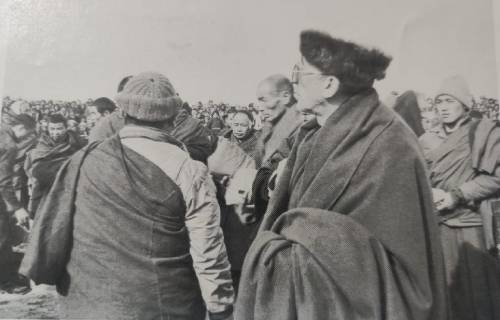
Ladakh's complex history is marked by the intricate interplay of diverse ethnicities, faiths, and cultures. The region's rich cultural heritage is rooted in its earliest inhabitants, and its people have long sought equitable treatment and autonomy. The struggle for Scheduled Tribe (ST) status is a significant part of this story.
Ladakh's history is characterized by the blending of different cultures, faiths, and ethnicities. The region's earliest inhabitants, the Brokpas and the Dards, laid the foundation for a rich cultural heritage. Over time, Ladakh's cultural landscape has undergone significant changes, influenced by modernization and external factors.
The struggle for Scheduled Tribe status was a key aspect of Ladakh's political evolution post-independence. Ladakhi leaders advocated tirelessly for recognition, driven by the desire for equitable treatment and autonomy.
The campaign for ST status was marked by relentless advocacy and sacrifices. Ladakhi leaders, including Kushok Bakula Rinpoche, played a crucial role in the struggle. The movement gained momentum in the 1980s, with the formation of the All Ladakh Action Committee for Declaring Ladakh as Scheduled Tribe.
The recognition of Ladakh's tribes as Scheduled Tribes in 1989 was a significant milestone, providing access to government schemes while highlighting ongoing struggles for equality. Despite this recognition, Ladakh continues to confront issues of discrimination and socio-economic disparities amidst rapid modernization.
The journey towards securing Scheduled Tribe status for Ladakh was marked by sacrifices. Brave souls like Ven. Lobzang Tsondus and Tashi Angchok made the ultimate sacrifice for the cause. Former MP Thupstan Chhewang asserts that Ladakhis endure pervasive discrimination despite being part of Jammu and Kashmir.
Ladakh enjoyed independence as a distinct entity before the advent of the kingdom system in the 10th century. The region's political landscape has undergone significant changes since then. The formation of the Ladakh Union Territory Front (LUTF) as a regional party marked a significant shift in Ladakh's political landscape.
Marriage customs among Ladakh's Buddhists encompass diverse practices, including fraternal polyandry and adoption for lineage continuity and social status. However, economic growth has spurred changes, such as a shift towards monogamy and rising instances of inter-caste and inter-religious unions.
The tribal people traditionally consumed "sattu", i.e., thick barley-cake, or of barley-meal, with a broth of turnips. Nowadays, noticeable shifts in dietary preferences are evident, with rice replacing traditional staples and the decline of traditional beverages.
The basic Ladakhi dress is warm and comfortable, with the "goncha" being a long gown made of homespun wool. However, the influx of modern influences has seen some youths gravitate towards Western-style attire.
The Ladakhi language is a rich and unique Tibetic language spoken in the union territory of Ladakh. It is the predominant language in the Buddhist-dominated district of Leh and is also spoken in the district of Kargil. With its distinct dialect, vocabulary, and grammatical structure, Ladakhi is an essential part of Ladakh's cultural identity.
Ladakhi language plays a vital role in preserving the region's history, traditions, and customs. It is also an important medium for storytelling, folklore, and cultural expression. Despite its significance, Ladakhi is considered a vulnerable language, with efforts being made to document and preserve it for future generations.
Conclusion
In conclusion, Ladakh's history epitomizes a rich tapestry of diverse ethnicities, cultures, and faiths. The journey towards securing Scheduled Tribe status for Ladakh was marked by relentless advocacy and sacrifices. As Ladakh progresses, it faces the imperative of balancing modernity with heritage preservation, ensuring that future generations can cherish and celebrate the diversity and richness of Ladakhi culture.